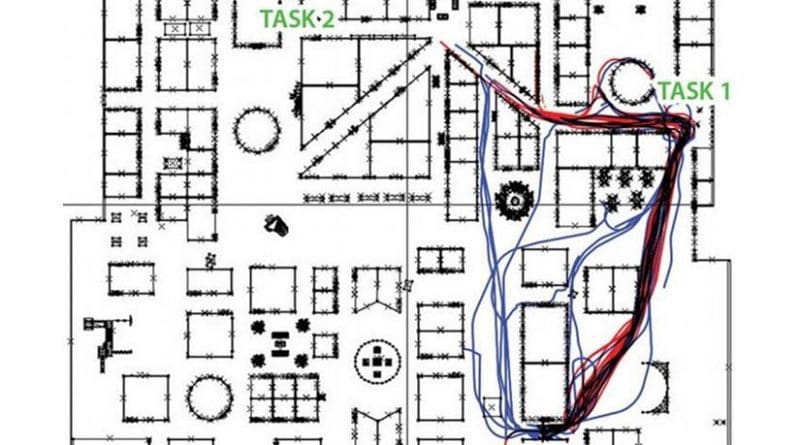Men Have Better Sense Of Direction Than Women
It’s been well established that men perform better than women when it comes to specific spatial tasks. But how much of that is linked to sex hormones versus cultural conditioning and other factors?
Researchers at the Norwegian University of Science and Technology (NTNU) decided to explore this idea by administering testosterone to women and testing how they performed in wayfinding tasks in a virtual environment.
Using fMRI, the researchers saw that men in the study took several shortcuts, oriented themselves more using cardinal directions and used a different part of the brain than the women in the study.
But when women got a drop of testosterone under their tongue, several of them were able to orient themselves better in the four cardinal directions.
“Men’s sense of direction was more effective. They quite simply got to their destination faster,” said Carl Pintzka, a medical doctor and PhD candidate at NTNU’s Department of Neuroscience.
The directional sense findings are part of his doctoral thesis on how the brain functions differently in men and women.
Puzzle solving in a 3D maze
Pintzka used an MRI scanner to see whether there are any differences in brain activity when men and women orient themselves. Using 3D goggles and a joystick, the participants had to orient themselves in a very large virtual maze while functional images of their brains were continuously recorded.
Eighteen men and 18 women first took an hour to learn the layout of the maze before the scanning session. In the MRI scanner, they were given 30 seconds for each of the 45 navigation tasks. One of the tasks, for example, was to “find the yellow car” from different starting points.
Women often use a route
The men solved 50 percent more of the tasks than the women.
According to Pintzka, women and men have different navigational strategies. Men use cardinal directions during navigation to a greater degree.
“If they’re going to the Student Society building in Trondheim, for example, men usually go in the general direction where it’s located. Women usually orient themselves along a route to get there, for example, ‘go past the hairdresser and then up the street and turn right after the store’,” he said.
The study shows that using the cardinal directions is more efficient because it is a more flexible strategy. The destination can be reached faster because the strategy depends less on where you start.
Women have better local memory
fMRI images of the brain showed that both men and women use large areas of the brain when they navigate, but some areas were different. The men used the hippocampus more, whereas women used their frontal areas to a greater extent.
“That’s in sync with the fact that the hippocampus is necessary to make use of cardinal directions,” said Pintzka.
He explained the findings in evolutionary terms.
“In ancient times, men were hunters and women were gatherers. Therefore, our brains probably evolved differently. For instance, other researchers have documented that women are better at finding objects locally than men. In simple terms, women are faster at finding things in the house, and men are faster at finding the house,” Pintzka said.
A little testosterone under the tongue
Step two was to give some women testosterone just before they were going to solve the maze puzzles.
This was a different group of women than the group that was compared to men. In this step, 42 women were divided into two groups. Twenty-one of them received a drop of placebo, and 21 got a drop of testosterone under the tongue. The study was double-blinded so that neither Pintzka nor the women knew who got what.
“We hoped that they would be able to solve more tasks, but they didn’t. But they had improved knowledge of the layout of the maze. And they used the hippocampus to a greater extent, which tends to be used more by men for navigating,” said Pintzka.
Losing one’s sense of direction is one of the first symptoms in Alzheimer’s disease.
“Almost all brain-related diseases are different in men and women, either in the number of affected individuals or in severity. Therefore, something is likely protecting or harming people of one sex. Since we know that twice as many women as men are diagnosed with Alzheimer’s disease, there might be something related to sex hormones that is harmful,” said Pintzka.
He hopes that by understanding how men and women use different brain areas and strategies to navigate, researchers will be able to enhance the understanding of the disease’s development, and develop coping strategies for those already affected.

